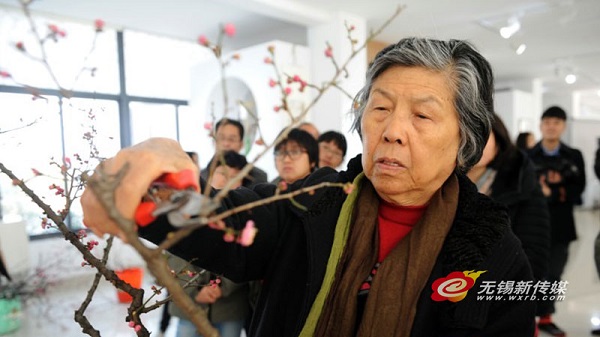Flower arranging artists from around the country have gathered at Wuxi's Plum Garden to arrange plum flowers and display their works at the art exhibition to be held there from March 1 to 9.
The exhibition has invited many flower arranging masters and organizations, including Wang Lianying, honorary president of China Flower Arrangement Association and doctorial tutor of Beijing Forestry University, and Nianhuage, a famous local flower art group.
 |
|
Wang Lianying, honorary president of China Flower Arrangement Association, concentrates on the set of plum flowers at the exhibition. [Photo/wxrb.com] |
Wang has been engaged in the research and teaching of the art of flower arrangement for a long time. As one of the representative inheritors of traditional flower arrangement, Wang has dedicated herself to the exploration, preservation and inheritance of this intangible cultural heritage. During the exhibition, Wang meticulously guided the set of every plum flower branch.
Originating from the Southern and Northern Dynasties (AD 420-581), the traditional art entered its great period of prosperity during the Song Dynasty (AD 960-1279), where it was included in the "four art skills of life", with tea brewing, picture hanging and incense burning. The art evolved into a subject with a complete theoretical system during the Ming Dynasty (AD 1368-1644).
It is believed traditional flower arrangement evokes the concept of communion between man and nature, as well as the respect for nature's laws. Artists always chase the perfect integration of natural ingenuity and human originality in their works in an attempt to achieve the state of unified entity.
 |
|
A flower arrangement artist shows his cutting skills at the exhibition. [Photo/wxrb.com] |
Visitors can take Metro Line 2 to Kaiyuan Temple, Meiyuan (Plum Garden) to capture the beauty of more than 100 potted plum flowers.